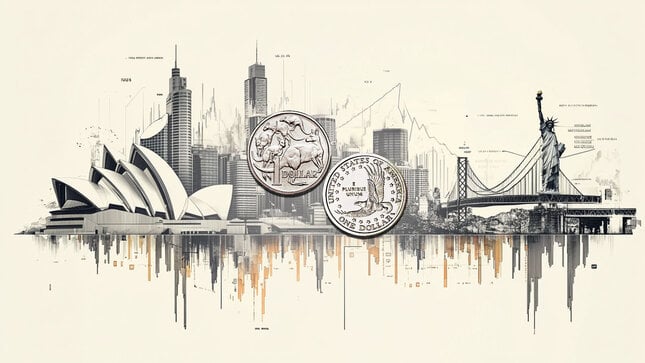- The Euro resumes the upside against the US Dollar.
- European stocks keep the positive bias so far on Friday.
- EMU final CPI matched the preliminary prints in October.
The Euro (EUR) regains some upside momentum against the US Dollar (USD), prompting EUR/USD to flirt once again with the 1.0880 region at the end of the week.
The Greenback, on the other side of the equation, faces increasing selling pressure and puts the key 104.00 support to the test amidst the generalized upbeat tone in the risk-linked galaxy and diminishing US yields across different timeframes. Speculation that the Federal Reserve (Fed) might start reducing its interest rates around the spring of 2024 remains well on the rise and underpins the downward bias in the index.
This speculation regarding prospective Fed rate cuts has been heightened as a result of weaker-than-expected inflation indicators (CPI and PPI) released earlier this week.
In the domestic calendar, final Inflation Rate for the broader Eurozone showed no surprises after the headline CPI rose 2.9% in the year to October and 4.2% when it came to the Core CPI.
In the US, Building Permits and Housing Starts will be in the centre of the debate. In addition, FOMC Vice Chair Michael Barr (permanent voter, centrist), Boston Fed President Susan Collins (2025 voter, centrist), Chicago Fed President Austan Goolsbee (voter, centrist) and San Francisco Fed President Mary Daly (2024 voter, hawk) are all due to speak.
Daily digest market movers: Euro remains bid near 1.0900
- The EUR extends the bullish stance against the USD on Friday.
- US yields trade in a mixed tone, German yields extend the decline.
- Markets believe the Fed will cut rates in the first quarter of 2024.
- Investors expected a prolonged pause by the ECB.
- Speculation of FX intervention continue to swirl around USD/JPY.
- ECB’s Villeroy said an impasse in the hiking cycle was fully justified.
- The US housing sector will be in the limelight later in the session.
Technical Analysis: Euro could revisit 1.1000 in the short term
EUR/USD seems to have embarked on a consolidation phase, trading below 1.0900.
Prior hitting the weekly high of 1.0945 (August 30) and the psychological threshold of 1.1000, the next goal of note for EUR/USD is the November top of 1.0895 (November 16). Further north, the pair might confront the August peak of 1.1064 (August 10) and another weekly high of 1.1149 (July 27), both of which precede the 2023 top of 1.1275 (July 18).
Occasionally, the pair may attempt temporary support at the 55-day Simple Moving Average (SMA) at 1.0639, before the weekly low of 1.0495 (October 13) and the 2023 low of 1.0448 (October 15).
Looking at the larger picture, the pair's outlook should remain favourable as long as it stays above the 200-day SMA at 1.0803.
Euro FAQs
What is the Euro?
The Euro is the currency for the 20 European Union countries that belong to the Eurozone. It is the second most heavily traded currency in the world behind the US Dollar. In 2022, it accounted for 31% of all foreign exchange transactions, with an average daily turnover of over $2.2 trillion a day.
EUR/USD is the most heavily traded currency pair in the world, accounting for an estimated 30% off all transactions, followed by EUR/JPY (4%), EUR/GBP (3%) and EUR/AUD (2%).
What is the ECB and how does it impact the Euro?
The European Central Bank (ECB) in Frankfurt, Germany, is the reserve bank for the Eurozone. The ECB sets interest rates and manages monetary policy.
The ECB’s primary mandate is to maintain price stability, which means either controlling inflation or stimulating growth. Its primary tool is the raising or lowering of interest rates. Relatively high interest rates – or the expectation of higher rates – will usually benefit the Euro and vice versa.
The ECB Governing Council makes monetary policy decisions at meetings held eight times a year. Decisions are made by heads of the Eurozone national banks and six permanent members, including the President of the ECB, Christine Lagarde.
How does inflation data impact the value of the Euro?
Eurozone inflation data, measured by the Harmonized Index of Consumer Prices (HICP), is an important econometric for the Euro. If inflation rises more than expected, especially if above the ECB’s 2% target, it obliges the ECB to raise interest rates to bring it back under control.
Relatively high interest rates compared to its counterparts will usually benefit the Euro, as it makes the region more attractive as a place for global investors to park their money.
How does economic data influence the value of the Euro?
Data releases gauge the health of the economy and can impact on the Euro. Indicators such as GDP, Manufacturing and Services PMIs, employment, and consumer sentiment surveys can all influence the direction of the single currency.
A strong economy is good for the Euro. Not only does it attract more foreign investment but it may encourage the ECB to put up interest rates, which will directly strengthen the Euro. Otherwise, if economic data is weak, the Euro is likely to fall.
Economic data for the four largest economies in the euro area (Germany, France, Italy and Spain) are especially significant, as they account for 75% of the Eurozone’s economy.
How does the Trade Balance impact the Euro?
Another significant data release for the Euro is the Trade Balance. This indicator measures the difference between what a country earns from its exports and what it spends on imports over a given period.
If a country produces highly sought after exports then its currency will gain in value purely from the extra demand created from foreign buyers seeking to purchase these goods. Therefore, a positive net Trade Balance strengthens a currency and vice versa for a negative balance.
Information on these pages contains forward-looking statements that involve risks and uncertainties. Markets and instruments profiled on this page are for informational purposes only and should not in any way come across as a recommendation to buy or sell in these assets. You should do your own thorough research before making any investment decisions. FXStreet does not in any way guarantee that this information is free from mistakes, errors, or material misstatements. It also does not guarantee that this information is of a timely nature. Investing in Open Markets involves a great deal of risk, including the loss of all or a portion of your investment, as well as emotional distress. All risks, losses and costs associated with investing, including total loss of principal, are your responsibility. The views and opinions expressed in this article are those of the authors and do not necessarily reflect the official policy or position of FXStreet nor its advertisers. The author will not be held responsible for information that is found at the end of links posted on this page.
If not otherwise explicitly mentioned in the body of the article, at the time of writing, the author has no position in any stock mentioned in this article and no business relationship with any company mentioned. The author has not received compensation for writing this article, other than from FXStreet.
FXStreet and the author do not provide personalized recommendations. The author makes no representations as to the accuracy, completeness, or suitability of this information. FXStreet and the author will not be liable for any errors, omissions or any losses, injuries or damages arising from this information and its display or use. Errors and omissions excepted.
The author and FXStreet are not registered investment advisors and nothing in this article is intended to be investment advice.
Recommended content
Editors’ Picks

AUD/USD stays firm near 0.6300 after strong Chinese exports data
AUD/USD is trading well bid near 0.6300 in Asian trades on Monday, opening the week on the front foot. Risk sentiment remains in a sweeter spot following the weekend's news of lower US tariffs on Chinese electronic supply chain and strong Chinese exports data for March. Tariffs talks will remain on the radar.

USD/JPY recovers to 143.00 amid volatile trading
USD/JPY is trimming losses to retake 143.00 in Monday's Asian trading. The US Dollar pauses its latest leg down, with traders digesting Trump's tariff news from the weekend. However, the Fed-BoJ policy divergence expectations underpin the Japanese Yen, keeping the weight intact on the pair.

Gold record rally pauses on Trump’s tariff concession
Gold price builds on Friday’s pullback from record highs of $3,245 early Monday. Trump’s lower tariffs on Chinese electronics and chips offer relief to markets. Technically, Gold could see a brief correction before the next leg up.

Bitcoin is on the verge of a breakout while Ethereum and Ripple stabilize
Bitcoin price approaches its key resistance level at $85,000 on Monday; a breakout indicates a bullish trend ahead. Ethereum and Ripple found support around their key levels last week, suggesting a recovery is in the cards.

Is a recession looming?
Wall Street skyrockets after Trump announces tariff delay. But gains remain limited as Trade War with China continues. Recession odds have eased, but investors remain fearful. The worst may not be over, deeper market wounds still possible.

The Best brokers to trade EUR/USD
SPONSORED Discover the top brokers for trading EUR/USD in 2025. Our list features brokers with competitive spreads, fast execution, and powerful platforms. Whether you're a beginner or an expert, find the right partner to navigate the dynamic Forex market.




